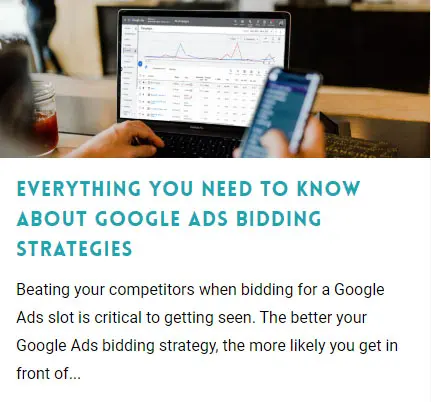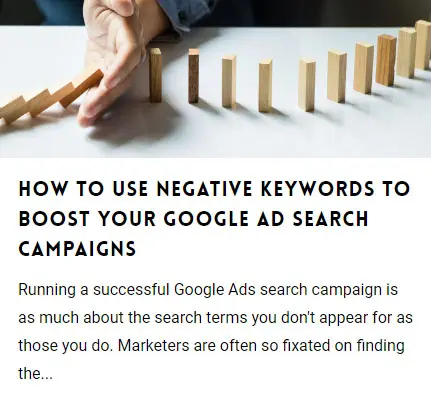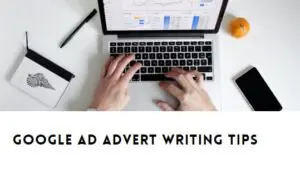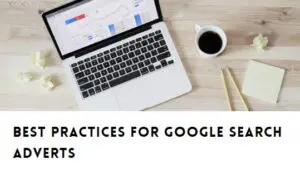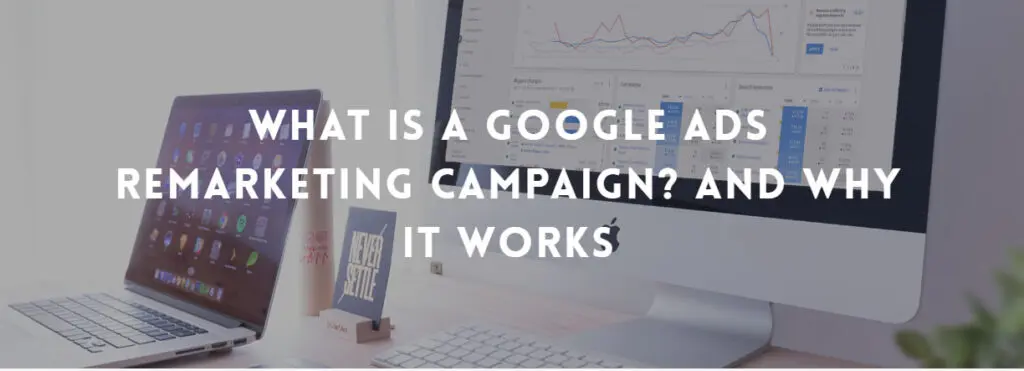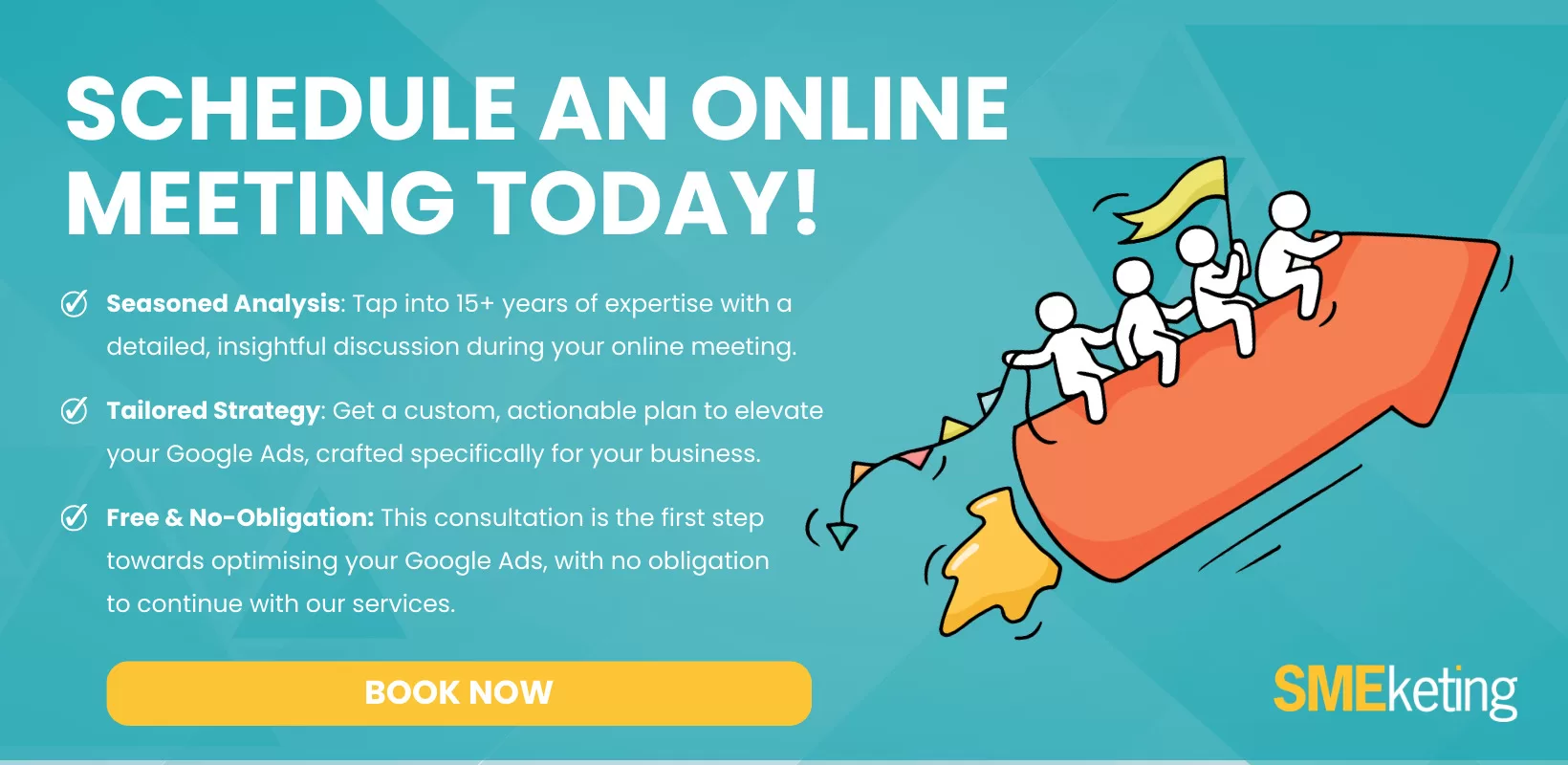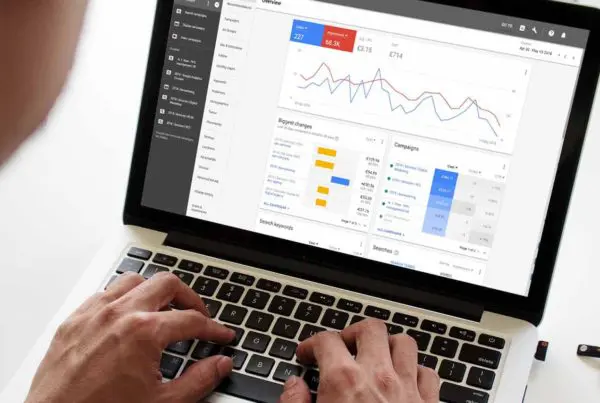I’m often asked how to increase your Google Ads click-through rate (CTR) – as it really is one of the best things you can do to improve your Google Ads campaigns. Whether you want to sign people up for an emailing list or boost sales, your Google ad’s click-through rate is the key.
Let’s start with the basics: CTR meaning.
The CTR represents the ratio between ad clicks and impressions. It can be shown in a simple calculation.
So, for example, if your ad receives 10 clicks for every 100 impressions, your CTR would be 10%. Maximising this ratio will result in far more visitors reaching your site.
In this post, I’m talking about the factors and strategies you can employ to increase your Google Ads CTR.
How to increase your Google Ads CTR:
1. Improve your quality score
Your quality score is a metric, scored from 0 to 10, that measures the relevance and quality of your ad. It’s determined by combining the performance of three components: expected CTR, ad relevance, and landing page experience.
For example, if you’re advertising for a lawnmower company, but your ad appears for tree surgery, the intent behind the user’s search doesn’t match your ad. Furthermore, if the user clicks on an ad for a specific lawnmower but ends up on your homepage, it’s not particularly relevant.
Increasing your quality score can lower the cost of keywords and boost your chance of being seen.
2. Use the best ad extensions
Google Ad extensions let marketers include extra information in their ads – and, by extension, increases the ad size on the search engine results page (SERP). Doing so increases the chance a user clicks on your ad and provides easy methods for a potential customer to contact you directly.
Currently, there are ten types of ad extensions. Here are the main types to consider:
- Sitelink ad extensions add an extra line of text that links people to specific pages on your site, e.g., a specific product or store hours. They increase the size of your ad and have been shown to enhance the CTR.
- Call extensions add your number to the advert. Using this number, your potential customers can contact you directly (which is then recorded as a conversion).
- Promotion extensions allow you to highlight a special offer or deal. This could be a monetary discount, a percentage discount, up to monetary discount, or up to percentage discount.
- Price extensions let you detail your pricing ties for different services. Using this extension will improve your quality score.
Read more about making the most of Google Ad extensions in this recent post:
3. Try A/B testing
Not sure which version of your ad to run? Try both. With A/B testing, you can run an experiment to see which version of your ad has the highest conversion rate. Then, when you’ve got the result, you can continue to run the ad that performed best.
All your campaigns should use A/B testing, helping you continually refine and hone your ad. That’s the best way to boost your click-through rate.
4. Utilise smart bidding strategies
Smart bidding strategies give marketers access to the latest advanced machine learning. Choose from strategies such as Target CPA, Target ROAS, Maximise conversion, and Maximise conversion value.
Through this approach, the algorithm will gradually learn the best bidding strategies over time, continually optimising when your ad is shown. It uses user information, like browsing history and demographic data, alongside the time of day and other contextual signals to ensure your ad appears at the best possible moments.
5. Add negative keywords
Negative keywords are the search terms you don’t want to appear for. For example, if you sell trees, you may choose “Christmas” as your negative keyword. That means you won’t appear for “Christmas trees,” “artificial Christmas trees,” or “Christmas tree decorations.”
By building a comprehensive list of negative keywords, you can ensure you’re not wasting your ad budget on search terms with lower user intent, thereby increasing your CTR.
6. Include a clear call-to-action (CTA)
Using action verbs and power words in your CTA can spark users to click on your ad. Think of words like “buy,” “learn,” or “book,” as well as power words like “unmissable” or “one-time offer.”
It’s all about triggering your user to want the product or service that’s only a click away.
7. Write attention-grabbing ad copy
There’s no substitute for high-quality ad copy. It should clearly explain who you are, what you sell, and why a user should purchase your product or service. Keep it short and to the point. If your ad copy is interchangeable with your competitor’s, you’re doing it wrong.
Think about your unique selling point – why should people click on your ad and not your competitors? The more attention-grabbing your ad, the more likely a person will notice and click.
Read these posts below, or click here to view all my posts about how to create and write the best adverts.
8. Create a remarketing campaign
Few people buy a product the first time they click on your ad. Not to worry! By using a remarketing campaign, you can continue to target this already interested audience. Better still, you can tailor the ads they see based on their prior behaviour.
For example, if they previously visited a particular product page, you can keep marketing this product to the user through ads. Remarketing campaigns typically have a much higher CTR and lead to a significant uptick in sales.
9. Highlight pricing in ad copy
Whether it’s using an ad extension or including your pricing in your ad copy, this is a simple yet effective way to improve your CTR.
If your price is lower than your competitors’, then it’s a major USP you want to advertise. Indeed, price is one of the primary factors influencing whether a customer buys a product.
Don’t hesitate to get in touch for help on your Google Ads campaigns.
- How to Do Keyword Research for Google Ads - January 15, 2024
- A Comprehensive Guide to Google Ads for B2C Businesses - January 8, 2024
- How to Write Calls to Action (CTAs) for Google Ads - December 25, 2023




